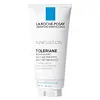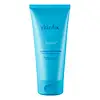What's inside
What's inside
 Key Ingredients
Key Ingredients

 Benefits
Benefits

 Concerns
Concerns

 Ingredients Side-by-side
Ingredients Side-by-side

Water
Skin ConditioningSodium Cocoyl Isethionate
CleansingCoco-Glucoside
CleansingKaolin
AbrasiveCoco-Betaine
CleansingCoconut Alcohol
EmollientHydrogenated Coconut Acid
EmollientStearyl Alcohol
EmollientMaltooligosyl Glucoside
Skin ConditioningPropanediol
SolventTitanium Dioxide
Cosmetic ColorantBetaine
HumectantBehenyl Alcohol
EmollientSimmondsia Chinensis Seed Oil
EmollientAloe Barbadensis Leaf Juice Powder
Skin ConditioningSodium Isethionate
CleansingHydroxypropyl Methylcellulose
Emulsion StabilisingSodium Chloride
MaskingHydrogenated Starch Hydrolysate
Humectant1,2-Hexanediol
Skin ConditioningMontmorillonite
AbsorbentCaprylhydroxamic Acid
Trisodium Ethylenediamine Disuccinate
Xanthan Gum
EmulsifyingSodium Hydroxide
BufferingWater, Sodium Cocoyl Isethionate, Coco-Glucoside, Kaolin, Coco-Betaine, Coconut Alcohol, Hydrogenated Coconut Acid, Stearyl Alcohol, Maltooligosyl Glucoside, Propanediol, Titanium Dioxide, Betaine, Behenyl Alcohol, Simmondsia Chinensis Seed Oil, Aloe Barbadensis Leaf Juice Powder, Sodium Isethionate, Hydroxypropyl Methylcellulose, Sodium Chloride, Hydrogenated Starch Hydrolysate, 1,2-Hexanediol, Montmorillonite, Caprylhydroxamic Acid, Trisodium Ethylenediamine Disuccinate, Xanthan Gum, Sodium Hydroxide
 Reviews
Reviews

Ingredients Explained
These ingredients are found in both products.
Ingredients higher up in an ingredient list are typically present in a larger amount.
Coco-Betaine is the natural version of Cocamidopropyl Betaine. It is often derived from coconuts.
Coco-Betaine is a surfactant, meaning it helps remove dirt and oil from the skin.
Propanediol is an all-star ingredient. It softens, hydrates, and smooths the skin.
It’s often used to:
Propanediol is not likely to cause sensitivity and considered safe to use. It is derived from corn or petroleum with a clear color and no scent.
Learn more about PropanediolChances are, you eat sodium chloride every day. Sodium Chloride is also known as table salt.
This ingredient has many purposes in skincare: thickener, emulsifier, and exfoliator.
You'll most likely find this ingredient in cleansers where it is used to create a gel-like texture. As an emulsifier, it also prevents ingredients from separating.
There is much debate on whether this ingredient is comedogenic. The short answer - comedogenic ratings don't tell the whole story. Learn more about comegodenic ratings here.
The concensus about this ingredient causing acne seems to be divided. Research is needed to understand if this ingredient does cause acne.
Scrubs may use salt as the primary exfoliating ingredient.
Learn more about Sodium ChlorideWater. It's the most common cosmetic ingredient of all. You'll usually see it at the top of ingredient lists, meaning that it makes up the largest part of the product.
So why is it so popular? Water most often acts as a solvent - this means that it helps dissolve other ingredients into the formulation.
You'll also recognize water as that liquid we all need to stay alive. If you see this, drink a glass of water. Stay hydrated!
Learn more about Water